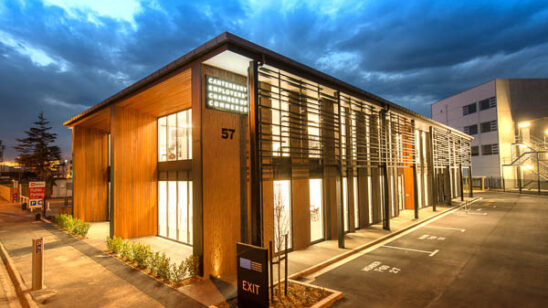
Workplace of the future?
The use of co-working spaces is on the rise, but should you accept a job in a co-working space or move your employees into one? According to recruiting experts Hays, there are several pros and cons to consider before you embrace this new trend.
Communal workspaces are not just for start-ups anymore,” Hays New Zealand’s Managing Director Adam Shapley says. “Big business is embracing the co-working phenomenon, but it’s not for everyone.”
According to the latest Hays Journal, which explores this issue, co-working chains have grown rapidly. GCUC, a co-working conference company, and Emergent Research, a research and consulting firm, found that there were 11,790 co-working spaces globally in 2017, with 1.74 million members. They expect membership to rise to 5.1 million by 2022.
It is thought that co-working will increase by 15% over the next five years – indeed, in Australia alone, the number of co-working spaces grew by a staggering 297 percent between 2013 and 2017 according to AllWork.Space.
The benefits
“The opportunity to network is a big attraction of co-working spaces,” Adam says. “Most co-working companies want to foster a community and many use open-plan desks, as well as hosting regular social events, wellness sessions, product launches and investor meetings.
“The open layout of co-working spaces also leads to a more collaborative, personal and socially dynamic culture within an organisation. Just make sure you find out which other businesses are in the space before you sign up, and whether they align with your goals,” Adam advises.
Another benefit is the opportunity to spot emerging business opportunities. According to the Hays Journal, professional services firm KPMG is one example of an organisation working alongside start-ups in co-working spaces to spot emerging trends and opportunities to support them earlier in their life cycle.
Kirsty Mitchell, Director of Growth for KPMG in the UK, says, “By placing small KPMG teams into co-working spaces, we are part of a fast-paced ecosystem, working daily with businesses to help them as they grow, and to identify key issues and opportunities for them as they arise”.
She believes these environments could help KPMG project teams come up with new solutions to problems as well, rather than internal project rooms which, she suggests, can stifle creativity.
The downside
“We are not all the same, and to be effective, a co-working space must therefore be able to adapt to the needs of individual tenants and their staff,” Adam warns. “This includes ensuring there are enough meeting rooms and private areas in which to meet clients or have private conversations.
“If you don’t take the appropriate steps, the culture of the co-working company can become more dominant than the employer’s. Regular video conferences with your head office team and private offices within co-working spaces can help to minimise this risk.”
A private office within a co-working space also addresses some of the other common drawbacks of co-working: overcrowding, noise, mess and lack of privacy.



